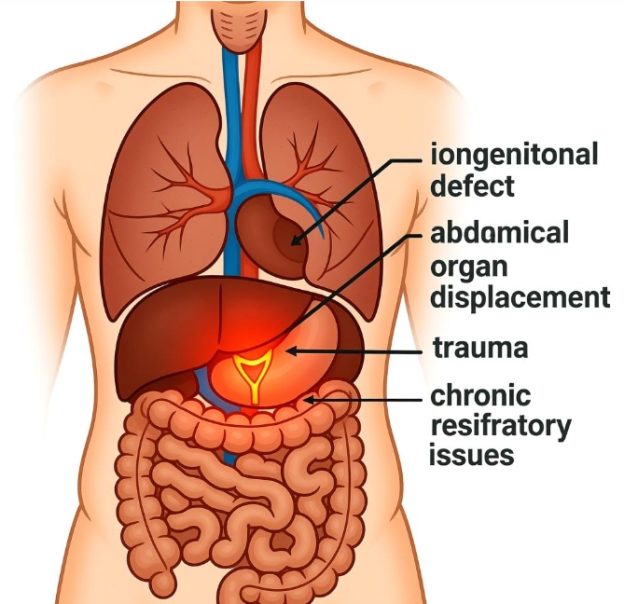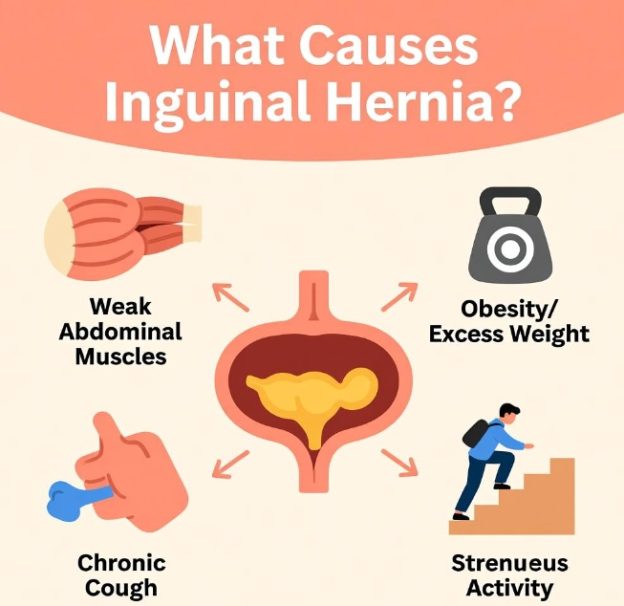Diaphragmatic hernia—congenital or acquired—occurs when abdominal organs herniate through a defect in the diaphragm into the chest. Clinical expression depends on patient age, defect size, and the amount of herniated viscera.
- Respiratory distress
Tachypnea, dyspnea, cyanosis, and reduced or absent breath sounds on the affected side are the cardinal neonatal signs. Mediastinal shift may produce a barrel-shaped chest and displaced heart sounds . - Feeding-related events
Infants often exhibit feed refusal, drooling, or vomiting because the herniated stomach or bowel is compressed; older children or adults may report post-prandial shortness of breath that improves on standing or walking . - Chest or epigastric discomfort
Adults can present with vague, intermittent chest pain or upper-abdominal heaviness that is easily mistaken for reflux, pleurisy, or angina . - Bowel sounds in the chest
Auscultation of peristaltic sounds over the hemithorax is pathognomonic; percussion may be tympanitic if gas-filled intestine lies beneath the rib cage . - Gastro-thorax tension
Sudden severe dyspnea, cyanosis, and cardiovascular collapse may develop if the stomach herniates and dilates, producing a tension gastro-thorax that compresses lung and heart . - Complication warnings
Incarceration or strangulation produces unrelenting pain, fever, leukocytosis, and obstructive ileus; these herald ischemia and require emergency surgery .
Because many cases are discovered incidentally on chest X-ray, any combination of unexplained respiratory difficulty, chest opacification, or post-prandial distress should prompt imaging to confirm the diagnosis.
| Symptom / Sign | Typical Presentation |
|---|---|
| Respiratory distress | Tachypnea, cyanosis, reduced breath sounds, mediastinal shift |
| Feeding intolerance | Vomiting, drooling, post-prandial dyspnea |
| Chest/epigastric pain | Intermittent, positional, often misdiagnosed |
| Bowel sounds in chest | Pathognomonic peristaltic sounds over hemithorax |
| Tension gastro-thorax | Acute cyanosis, shock, tympanic percussion |
| Incarceration/strangulation | Constant pain, fever, leukocytosis, bowel obstruction |



